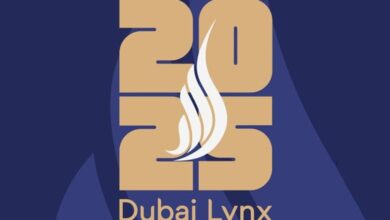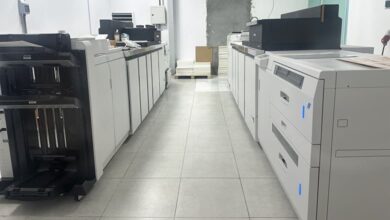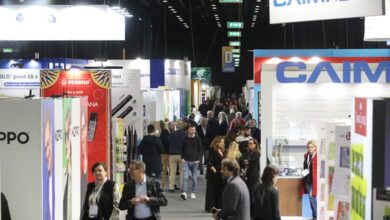
It is interesting to review technical articles a couple of years after writing them, although usually there has not been a global pandemic in the meantime.
Digital Printing is widely used in labels and packaging in 2019, and it will be further ensconced. The figure shows the choice that a converter faces when they decide to make an investment, as well as these there are a range of digital overprinters and sophisticated bespoke integrations, some as a part of manufacturing and filling lines. This shows the high number of players now competing in the wide range of packaging applications, offering new capabilities and functionalities, with steadily increasing productivity and lower costs.
I was right that the map did get more crowded, as suppliers launch new and improved models, but there was a high-profile exit. Smithers tracks developments in this market sector, publishing reports and running conferences on the future of digital packaging, bringing together hundreds of brands, retailers, packer/fillers, converters, designers, agencies and designers meet with equipment and ink/toner suppliers, with workflow and logistics companies also involved. It is an excellent forum and over the years the conversation has moved on from the technology and does it actually work, to the business benefits from digital and how consumers will respond to the new capabilities.
Quality, reliability and speed are no longer issues for inkjet and electrophotography package printers. Nor is speed with sheetfed machines offering 10,200 B1 sheets per hour and web presses up to 305m per minute in formats up to 2.8m wide making productivity comparable to litho, flexo and gravure competitors. Printhead and equipment manufacturers have developed many solutions that eliminate inkjet artefacts, compensating for nozzle outs in real time that extend the life of the heads and machine uptime. Inkjet will be the real winner, with faster machines being shown, particularly in flexible packaging. The wide-web Kodak Ultrastream system from Uteco, Windmöller & Hölscher and Comexi have announced systems as have Fujifilm and Screen, with others in development and Koenig & Bauer are pushing their RotaJet into high volume applications. It is used in cartons, along with the sheetfed VariJET from the K&B Durst joint venture. EFI will doubtless try to widen their market into cartons and probably flexible packaging, after all the Bolt textile machine from Reggiani looks like it would be a pretty powerful flexible packaging device with a few modifications. Some from the myriad of narrow web label printers will show wider, faster inkjet presses, as will some of the current wide-format inkjet suppliers.
It is not just printing. Some vendors have single pass, highly automated systems to print and finish corrugated boxes, cartons and flexibles in a single pass. This is commonplace in labels, for other packaging the enabler is combining digital print with digital finishing, adding automated control systems to drive the press, measure and check the print then track through finishing which may be coating, laminating, cutting, creasing, folding and gluing, together with a wide variety of embellishments. The digital front end controller is becoming increasingly powerful, to drive the digital print section, to measure and control quality and then to set and drive the finishing technology. This approach replaces the traditional skills of the press minder and finishing journeymen operators which is important because skilled labour is a resource that is increasingly difficult to recruit and retain.
While digital presses are the new, shiny and sexy headline grabbers, more important is the enabling software, because the only way of making money from a digital press is to print saleable output and a powerful workflow is vital to prepare the artwork files and keep the print queue well stocked. In 2019 this was a barrier for packaging converters getting into the sector as many do not have prepress and data handling skills. The good news is there are many companies providing solutions, integrating into management information systems to automate administration and automation functions which is necessary to handle many short run jobs, and to prepare variable content. Workflow is becoming collaborative and automated, where designs are produced and approved, then loaded into job queues for automated colour management and imposition with no manual involvement at the converter. The MIS is linked, ordering substrates and planning the production on printer and finishing to meet the customer requirements and optimise capacity at the converter.
Digital workflow can be daunting for packaging converters used to handle a few large jobs but it is the way of the world. At least you can explore solutions at drupa because simplifying supply chains is the key to future success supplying packaging and labels. Esko is the market leader with a broad variety of specialist packaging software tools showing how to automate the repetitive processes involved with packaging design, approvals and prepress with integrations to third party MIS and digital presses. They are joined by Hybrid Software and many small specialist providers selling apps and solutions.
All these packaging developments are ultimately driven by end customer expectations, or rather demands. In the increasingly connected world (accelerated by COVID-19) these demands and expectations are changing, with more engagement and interaction to improve the consumer experience of the brand. Digital printing allows brands to make content decisions closer to the consumer, helping them to provide more than just the traditional containment and protection functions of the pack, with information and promotion. Digital print and finishing of packaging can provide a wider range of functions beyond analogue capabilities, which is why it is growing so quickly.
Drupa is the most important print show, because the exhibitors (and all the important ones will be there) show what they have and they also use the event to showcase what they may well be working on. And digital packaging print (plus finishing) will very much be on the agenda. There will be more machines for labels, corrugated – post and preprint, replacements for litholam, for folding cartons, for flexible packaging, for metal and there will be several direct-to-shape machines doing interesting things on plastic and glass. Established players will show improvements to quality, speed and formats, with new inks and toners broadening the types of packaging they can produce.
It was sad the physical drupa did not happen, but the digital alternative showed the appetite for innovation has not been diminished. Companies are taking stock and developing their future strategies and digital is firmly on the mainstream. The pandemic allowed many business leaders time to assess their operations in light of changing customer needs as demand patterns changed. Innovation is key, with techniques to overcome cognitive barriers (past experiences stopping changes) under traditional corporate control valves. Companies need accelerators to change following McKinsey Analysis that courage one of the defining success factors. Waiting for cheaper and better technology to mature does not pay off in the short term, but companies making inkjet work for themselves are seeing the pay offs now. More will join in.

About the Author
Dr. Sean Smyth is a Senior Analyst & Consultant at Smithers. He is closely monitoring the digital transformation of the printing and packaging industry.

.gif)



